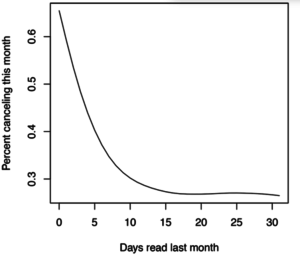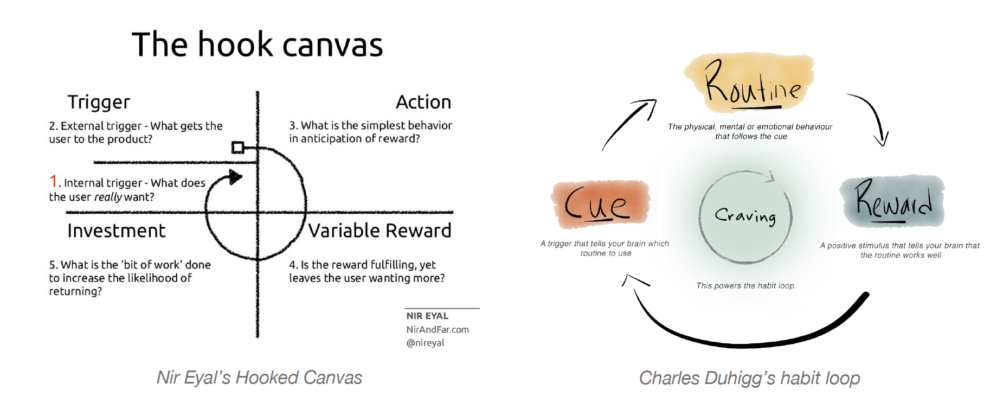Blog
Defining news habits in the digital age
At the “Digital Growth Summit” we learned that succeeding with habit formation requires organisational change, a deeper understanding of readers, and continuous experimentation. To elaborate on these learnings we have spent the past few months interviewing leaders of newspapers with strong habit formation strategies which we will share in an upcoming research report. Read our complete guide to habit formation for news publishers now!
A long history of habit formation in the news industry
From our previous research in this series, we know a key feature of newspaper products is the regular publishing frequency: subscribers know when they can expect new content. It is this routine frequency that contributed to the habit-forming power of newspapers over the years. Every morning when you opened your front door, you would see that day’s newspaper waiting for you on your doorstep. However, when news went online, this product experience did not follow. Readers had to build different habits for getting their news, and publishers failed to prioritise the very important aspect of maintaining the habitual relationship with their readers. Luckily we see things changing lately and habit formation is now the top concern amongst leading newspaper executives. How can we create news products that encourage readers to adopt them into their daily routine as they did with print editions in the past 400 years?

In a study of over 13 terabytes of subscriber data from three different newspapers, researchers from Northwestern University found that regular reading habits were the most strongly correlated with subscriber retention, more so than even time spent or number of stories read. The study found that the number of days a subscriber reads in a month is inversely related to the percent cancelling their subscription. There is a sharp decline between subscribers reading zero to ten days a month — the cancellation rate is cut by more than half.
What is a habit?
Researchers from different backgrounds such as psychology, sociology and business have tried to understand and define the key components of habits. According to most habit formation frameworks, there must first be a trigger, which activates a routine, that is then rewarded. This encourages the person to repeat the action until it develops into a habit.

For a habit to be created, first the reader must be triggered, either internally through their own desire or externally by an action taken by the publisher. Then an action follows, such as clicking a link to an article on Twitter. Actions can be facilitated by good usability design, which increases the ease of follow-through. Next is the need for a variable reward, for example getting those shares and likes is what users crave. It becomes an automatic thing that sends endorphin levels through the roof. Finally comes the investment from the user, such as sharing an article, inviting friends to share in this experience. This commitment can help to make triggers more engaging. This cycle becomes a habit loop, encouraging people to continue the action until it becomes a full habit.
1. Internal triggers
While there were many disruptions brought by digitalisation, there were also incredible new opportunities to leverage readers’ existing routines at a relatively low barrier. Morning publications could start experimenting in the evening space or explore new features like audio, newsletter or digital-only-editions that tap into internal triggers of readers such as boredom during their commute or need for entertainment in the evening leisure time.
2. External triggers
External triggers are just as important; for digital media, the clearest example is push notifications. Swiss Publisher Tamedia publishes a daily digital-only edition called Tamedia 12. This is a lunch publication for which they send every day a push notification to alert readers that the new edition is ready. The team observed that many readers would scroll through the new stories once they received the alert, then read the stories in-depth later that evening. It was the push notification, an external trigger, that helped readers incorporate the edition into their daily routine. They learned just how important this external trigger was though one day when by accident it did not get sent and the edition’s download rate plummeted.
3. Variable reward
To ensure readers truly adapt news into their daily routine, it is important to provide a reward for reacting to the trigger. There are different ways to reward readers with the news content itself. In our own research led with KU Leuven and Mediahuis, we have defined the nine building blocks of positive affect: these are key factors that contribute to a high perceived positive value of a newspaper edition. For instance, to succeed, publishers need to mix the comfort of predictability and the serendipity of the unexpected. While it’s important to have a predictable publishing schedule, often readers still want to be surprised with the content itself. This idea of a variable reward is key for habit formation, according to Nir Eyal. He stresses the importance of giving your readers a variable reward for their actions. Using the example of a slot machine, users start to crave the thrill of pulling the lever and seeing what they are rewarded with — we can see the same behavior with Tristan Harris’s “pull to refresh” functionality for news feeds, which can be incredibly addicting. The unpredictability makes the reward much more exciting and will keep users coming back every day for the surprise.
Putting users to work is critical in creating products people love. Habit forming products can appreciate in value – they gain value the more we interact with them.
Nir Eyal, author of Hooked
The final step of Nir Eyal’s famous Hook Model is the “Investment Phase”. Research shows that putting effort into a task adds value to the product itself. The more you add new friends on Facebook, or share more photos on Instagram, the more valuable you find the platform. Storing this value makes you more committed to the product. Things such as downloading an app and giving it screen space, setting up personalized feeds or commenting get readers hooked and encourages them to renew their subscriptions.
Next steps
The third chapter of our Revinenting Digital Editions will be published next month. Subscribe now to receive the report first.
A big thank you to all of our interviewees for their time and their learnings:
- Anne Powell, Director of Member Engagement at The Wall Street Journal
- Tor Marius Espedal, Interim Head of CRM at Schibsted
- Martin Dowideit, Head of Digital at Handelsblatt
- Remy Becher, VP of Product at The Economist
- Julian Kögel, Business Development Digital at Südkurier
- V’Ming Chew, Deputy head group digital strategy at Singapore Press Holding
- Richard Furness, Managing Director of Consumer Revenues & Publishing at The Guardian
- Mathias Douchet, Product Director at The Telegraph
- Eva Roa, Senior Manager, News Product Analytics at The New York Times
This article was written by Mary-Katharine Phillips, Media Innovation Analyst at Twipe from 2017 – 2021.
Other Blog Posts

Stay on top of the game
Subscribe to Twipe’s weekly newsletter to receive industry insights, case studies, and event invitations.
"(Required)" indicates required fields

